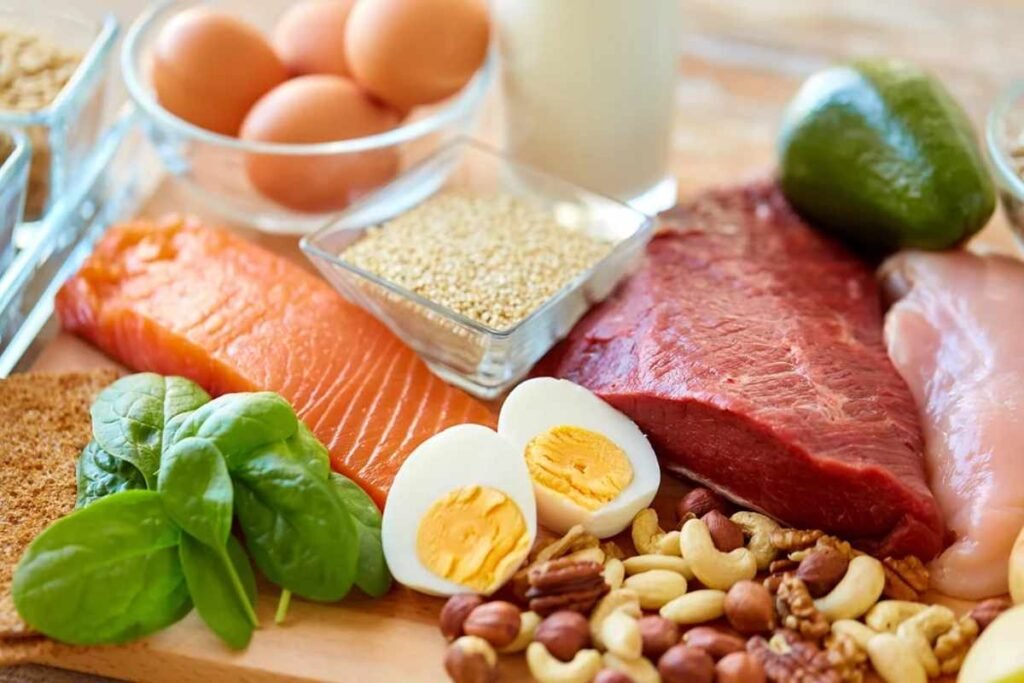The Protein Balance in Diet Trends in Social Media
In recent years, the prevalence of high-protein balance in diet has surged, largely fueled by social media. From high-protein recipes to influencers promoting protein-heavy keto and carnivore diets, it’s evident that protein has become a focal point in discussions about nutrition and weight loss. However, dietitians caution that this obsession may divert attention from other essential nutrients that our bodies require.
Registered dietitian Federica Amati explains that the focus on daily protein intake in grams can be misleading and oversimplified. The message that many people are not consuming enough protein is often exaggerated. Abbey Sharp, another registered dietitian, emphasizes that if individuals are meeting their caloric needs, they are likely also meeting their protein requirements.
Understanding the Importance of Protein Balance in Diet
Protein balance in diet is a macronutrient composed of amino acids, which serve as vital building blocks for cells, tissues, hormones, and enzymes. It plays a crucial role in various bodily functions, including muscle growth, metabolism maintenance, and immune function. Sharp points out the numerous benefits of protein for overall health, including its contributions to weight management and satiety.
Despite its importance, the current fixation on protein has led to an oversupply of protein-rich products on grocery store shelves, from shakes and powders to snacks. This trend has emerged alongside the growth of the fitness and nutrition industries. Amati notes that while protein is important for muscle building and weight loss, influencers often recommend excessive protein consumption that exceeds what most individuals actually need.
Determining Your Protein Balance in Diet. Needs
The recommended protein intake for most adults is significantly lower than the figures often touted online. The U.S. Department of Agriculture suggests that 10% to 35% of daily caloric intake should come from protein. A common guideline proposed by dietitians is an intake of 0.8 to 1.2 grams of protein per kilogram of body weight. For example, a person weighing 150 pounds, which is approximately 68 kilograms, should aim for between 54 and 82 grams of protein each day.
While active individuals might consume more protein to satisfy their increased energy demands, Sharp emphasizes that the average person generally meets or exceeds their protein needs. Older adults may require higher protein intake, potentially up to 1.8 grams per kilogram, to maintain muscle and bone health, especially during menopause.
Risks of Excessive Protein Consumption
Amati warns that the obsession with protein can lead to negative health consequences, particularly when it results in overconsumption of animal-based proteins that are high in saturated fats. Sharp highlights potential risks associated with high protein intake, including kidney issues, an increased risk of kidney stones, higher chances of colon cancer, and a greater risk of heart disease. However, obtaining protein primarily from plant-based sources is less likely to pose such risks.
The Underlying Fiber Deficiency
As people focus excessively on protein, they often neglect an equally important nutrient: fiber. The Dietary Guidelines for Americans recommend that women consume 22 to 28 grams of fiber per day, while men should aim for 28 to 34 grams. However, the average American only consumes about 10 to 15 grams of fiber daily.
Sharp stresses the significance of fiber for gut health, regularity, and weight management, as fiber-rich foods tend to be lower in calories while promoting a feeling of fullness. Additionally, fiber feeds the beneficial bacteria in the gut microbiome, which can enhance overall health.
Strategies for Increasing Fiber Intake
To boost fiber consumption, dietitians recommend focusing on whole foods such as fruits, vegetables, nuts, seeds, and whole grains, rather than relying on fiber supplements. High-fiber options include beans, lentils, berries, leafy greens, popcorn, avocados, and oatmeal.
One effective approach to building balanced meals is to fill half of your plate with plant-based foods, such as salads or steamed vegetables. The other half can consist of a lean protein source and a complex carbohydrate. Incorporating high-fiber snacks, such as an apple with almonds, can also help meet daily fiber goals.
In summary, while protein is undeniably important, the fixation on high protein intake may overshadow the necessity of other vital nutrients, particularly fiber. Balancing your diet with a variety of nutrient-dense foods is essential for optimal health.









